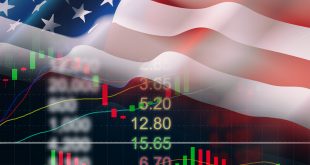During a meeting between US Secretary Janet Yellen in Guangzhou and Beijing, the US and China are anticipated to carry on their conversation on trade and investment. To keep up the dialogue, the two nations established formal economic working groups. Additionally, Yellen’s eating of a meal prepared with hallucinogenic “magic” …
Read More »Economic indicators incite pessimistic outlook for 2024
As of next January, a recession is predicted to hit the US economy as investment and production decline. According to a press release from the Conference Board, the Leading Economic Index (LEI) fell 0.8% in October and 3.3% over the previous six months, marking the 19th consecutive m-o-m decline. The …
Read More »Stronger US Dollar Inspires Finding Value Abroad Ideas
The US dollar’s performance undoubtedly attracts investors to favour it above most financial assets and rival currencies. This seems natural as most foreign currencies are now weak. Over the passage of several months in 2022, markets have noticed that European companies underperformed US peers by a significant margin. The same …
Read More »US Banks Hit By Ukraine War, Investment Banking Activity Retreats
Earning expectations for the big banks have been dialed back through the first quarter amid Russia sanctions and a steep decline in deal activity Big US banks are expected to reveal the impact of the Ukraine war and a drop in investment banking activity related to moribund capital markets when …
Read More »US Durable Goods Orders Slump Below Expectations
With orders for transportation equipment pulling back sharply, the Commerce Department released a report on Thursday showing new orders for US manufactured durable goods tumbled by much more than expected in the month of February.The Commerce Department said durable goods orders slumped by 2.2 percent in February after jumping by …
Read More »Institutional Investors Overcome Barriers To Bitcoin
Before 2000, most traditional institutional investment portfolios did not allocate to commodities and traditionally balanced portfolios of stocks (60 percent) and bonds (40 percent) were the prevalent norm with no alternatives across the board. Given that diversification is a significant catalyst for investment, portfolios started greater diversification into alternatives and …
Read More » Noor Trends News, Technical Analysis, Educational Tools and Recommendations
Noor Trends News, Technical Analysis, Educational Tools and Recommendations






